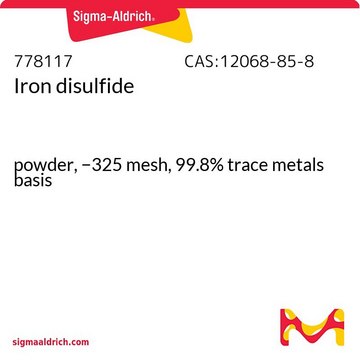All Photos(1)
About This Item
Linear Formula:
AlCl3
CAS Number:
Molecular Weight:
133.34
EC Number:
MDL number:
UNSPSC Code:
12352302
PubChem Substance ID:
Recommended Products
grade
SAJ first grade
vapor pressure
1 mmHg ( 100 °C)
Assay
≥98.0%
form
solid
reaction suitability
reagent type: catalyst
core: aluminum
availability
available only in Japan
pH
2.4 (20 °C, 100 g/L)
mp
190 °C (lit.)
SMILES string
Cl[Al](Cl)Cl
InChI
1S/Al.3ClH/h;3*1H/q+3;;;/p-3
InChI key
VSCWAEJMTAWNJL-UHFFFAOYSA-K
Looking for similar products? Visit Product Comparison Guide
Related Categories
Features and Benefits
The vapor-phase co-reductions with other metal halides by hydrogen results in finely divided intermetallics with applications as structural materials or compounds with useful thermoelectric, magnetic, and oxidation-resistance properties. Aluminum nitride can be synthesized from the elemnts with AlCl3 added to help facilitate crystallization.
Signal Word
Danger
Hazard Statements
Precautionary Statements
Hazard Classifications
Eye Dam. 1 - Skin Corr. 1B
Supplementary Hazards
Storage Class Code
8B - Non-combustible corrosive hazardous materials
WGK
WGK 1
Flash Point(F)
Not applicable
Flash Point(C)
Not applicable
Personal Protective Equipment
dust mask type N95 (US), Eyeshields, Gloves
Choose from one of the most recent versions:
Already Own This Product?
Find documentation for the products that you have recently purchased in the Document Library.
Diagnosis and management of hyperhidrosis.
R A Benson et al.
BMJ (Clinical research ed.), 347, f6800-f6800 (2013-11-28)
Dharmalingam Prakash et al.
Neuromolecular medicine, 15(1), 192-208 (2013-01-15)
Aluminum (Al) is an environmental neurotoxin that affects cerebral functions and causes health complications. However, the role of Al in arbitrating glia homeostasis and pathophysiology remains obscure. Astrocyte, microglia activation (reactive gliosis), and associated inflammatory events play a decisive role
Bagineni Prasad et al.
Chemical communications (Cambridge, England), 48(84), 10434-10436 (2012-09-20)
A conceptually new and straightforward introduction of sulfonyl groups at the C-7 position of an indole ring has been achieved via AlCl(3) mediated unexpected regioselective sulfonyl group migration for N-alkyl/aryl/heteroarylsulfonyl indoles affording potential inhibitors of Mycobacterium tuberculosis H37Rv chorismate mutase.
Hai-hua Zhao et al.
Behavioural brain research, 241, 228-234 (2012-12-12)
Environmental agent aluminum, a well-known neurotoxin, has been proposed to play a role in the development of Alzheimer's disease (AD), and produced clinical and pathological features which were strikingly similar to those seen in AD brain, such as neurofibrillary tangles.
Mengyun Zhu et al.
Organic letters, 16(7), 1856-1859 (2014-03-19)
An unprecedented AlCl3-promoted formal [2 + 3]-cycloaddition of 1,1-cyclopropanes with readily available N-benzylic sulfonamides has been developed. Experimental evidence supports an unusual mechanism wherein the donor-acceptor cyclopropane serves as a source of 2-styrylmalonate rather than the "classical" 1,3-dipole. A broad
Our team of scientists has experience in all areas of research including Life Science, Material Science, Chemical Synthesis, Chromatography, Analytical and many others.
Contact Technical Service







